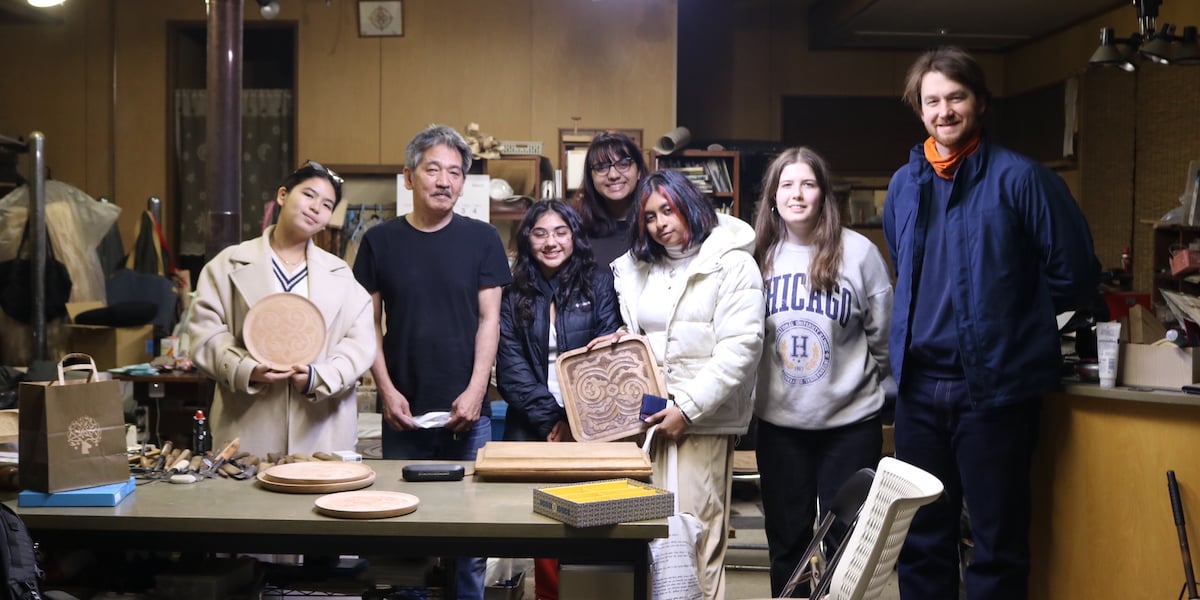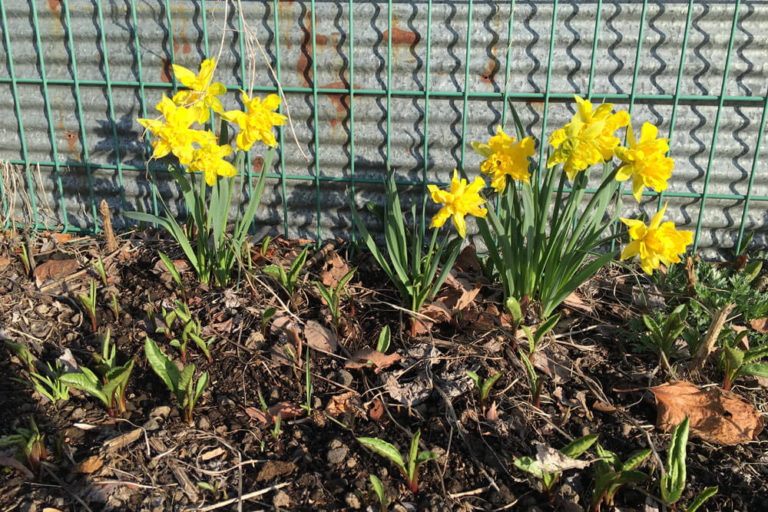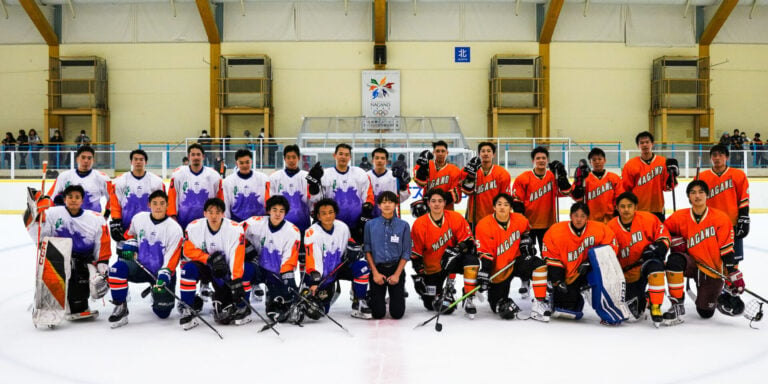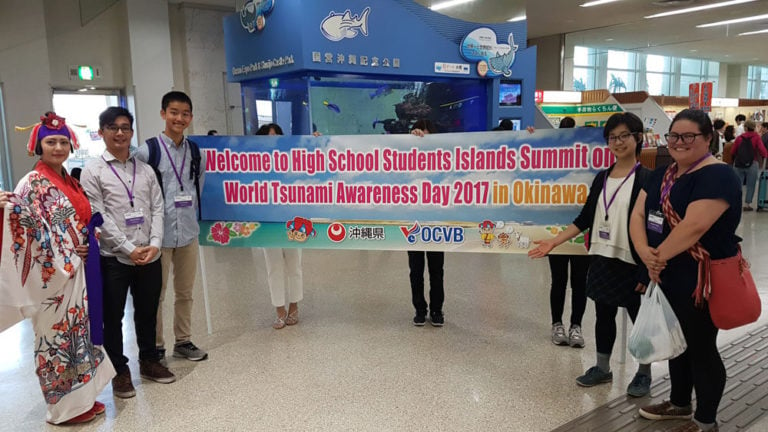From March 12-16, 2023, during Spring Project Week, we embarked on a journey back to the picturesque, although quite rainy, town of Nibutani in Hokkaido, Japan, with a group of enthusiastic student researchers eager to delve into the rich history and cultural heritage of the Ainu people. That was my second visit after my first trip in 2021. This research trip aimed to exemplify the practice of teacher-student collaborative interaction in curriculum development and investigate ways to integrate education about indigenous cultures into curriculum development.
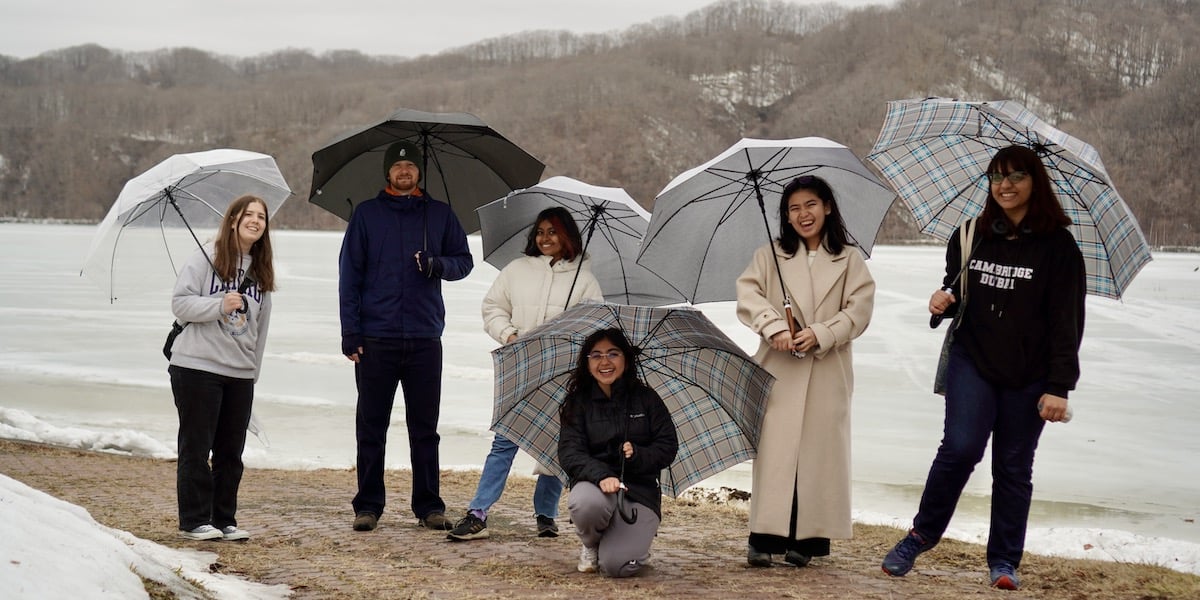
Day 1: Unveiling the Ainu World
Our journey began with an arduous yet exciting trip to Sapporo, followed by a series of buses and trains that ultimately brought us to Nibutani. The early morning van ride to the airport set the tone for the adventure that awaited us. Unexpectedly, our first interview with Mamoru Kaizawa, a prominent member of the Ainu community, was scheduled earlier than anticipated. The students, filled with anticipation, eagerly engaged in their first conversation with Mamoru, ready to learn directly from his experiences and perspectives. This encounter laid the foundation for our exploration of Nibutani in the coming days.
Day 2: A Youthful Curiosity
On the second day, we visited the cultural museum, a familiar place from my previous visit in April 2021, but this time with a fresh perspective fueled by the curiosity of the youth. The students immersed themselves in the exhibits, absorbing every detail and nuance that portrayed the essence of Ainu culture. Here, we had the privilege of conducting our second interview, this time with Kenji, an Ainu language teacher, and custodian of the Ainu language. His insights and the significance of preserving the language for future generations captivated the students. This day further deepened their connection with the Ainu heritage.
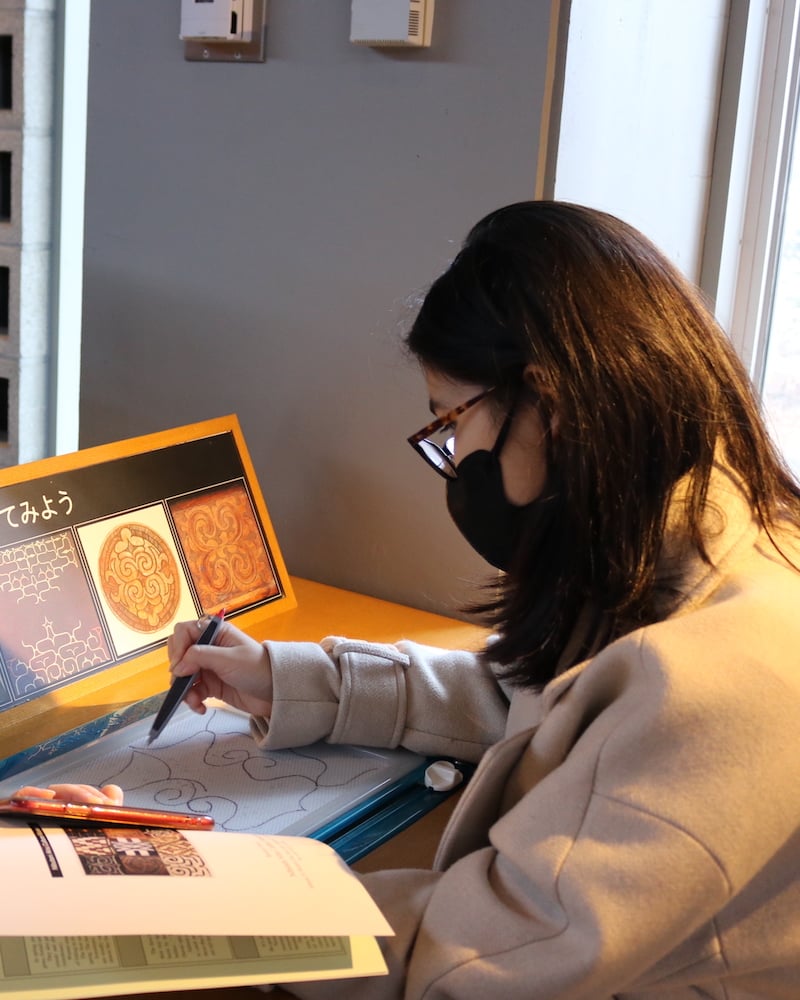
Day 3: Fond Farewells and Lasting Impressions
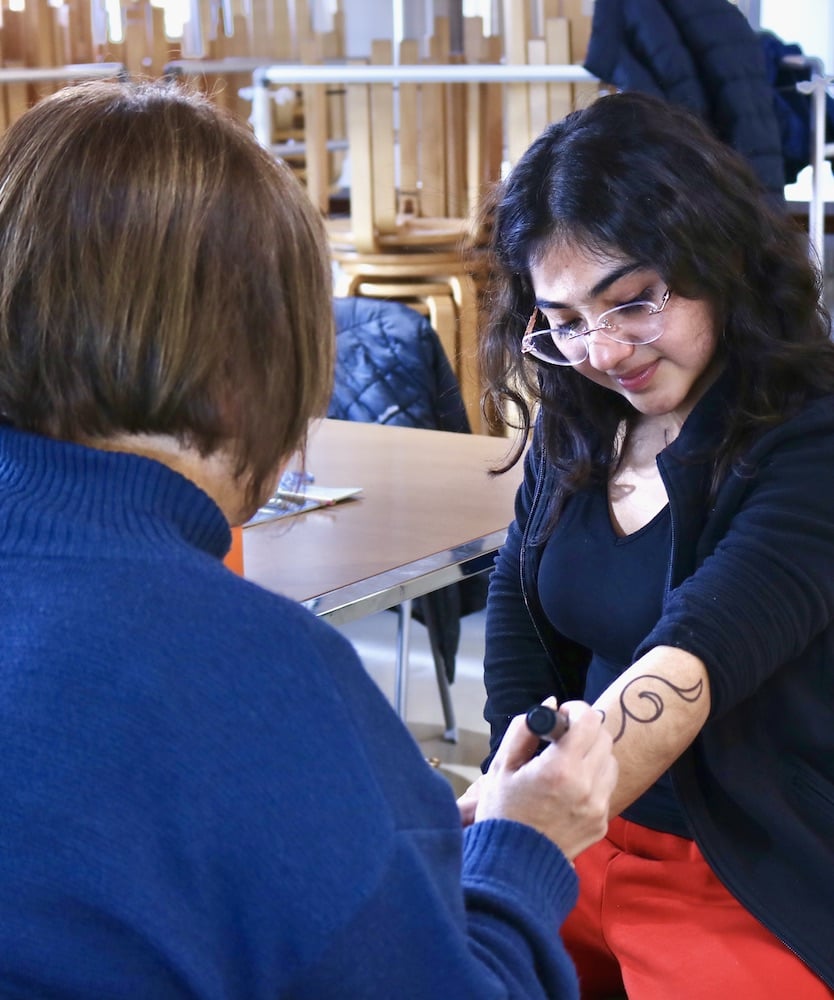
On this day, we bid farewell to the Ainu community with a final interview, this time with Maki Sekine, an esteemed Ainu artisan. Her profound insights and personal journey resonated deeply with us, serving as a testament to the resilience and enduring spirit of the Ainu people. Saying our goodbyes was not easy, as we had formed deep connections and a sense of kinship with the community. As we departed Nibutani, our hearts were filled with gratitude for the warm hospitality and wisdom we had received. We then headed to Sapporo for a moment of reflection and introspection.
Day 4: Forging New Connections
Eager to continue our exploration of Japanese culture and education, we met with a progressive high school, Shinyo Sapporo. Our intention was to foster new connections and explore potential collaborations for future projects. The staff at Shinyo Sapporo were astounded by the depth of knowledge and academic integrity displayed by our students. The meeting was a fruitful exchange of ideas, opening up possibilities for future joint initiatives that would celebrate and promote the Ainu culture. This encounter exemplified the collaborative spirit we aimed to foster in our curriculum development.
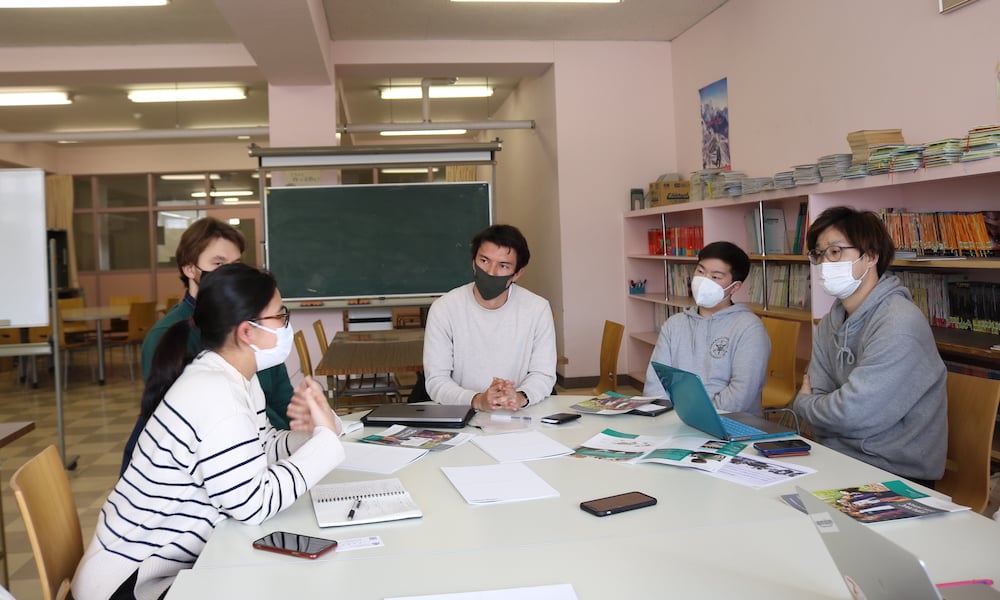
The Last Day: Connecting Histories and Pedagogy
On our final day, we met Matt Cotter, a renowned scholar in curriculum development and indigenous studies at Gakusei University. Matt enthusiastically took us on a journey through his personal experiences and the connections he had forged between Maori and Ainu cultures. As Matt shared his insights, we learned about the importance of integrating indigenous histories into educational frameworks. He emphasized the need for a curriculum that reflects the lived experiences and perspectives of indigenous communities, giving voice to their narratives and fostering a deeper understanding among students. Through his stories and experiences, Matt demonstrated how intertwining Maori and Ainu studies could create a powerful educational framework that promotes cultural appreciation, empathy, and decolonization.
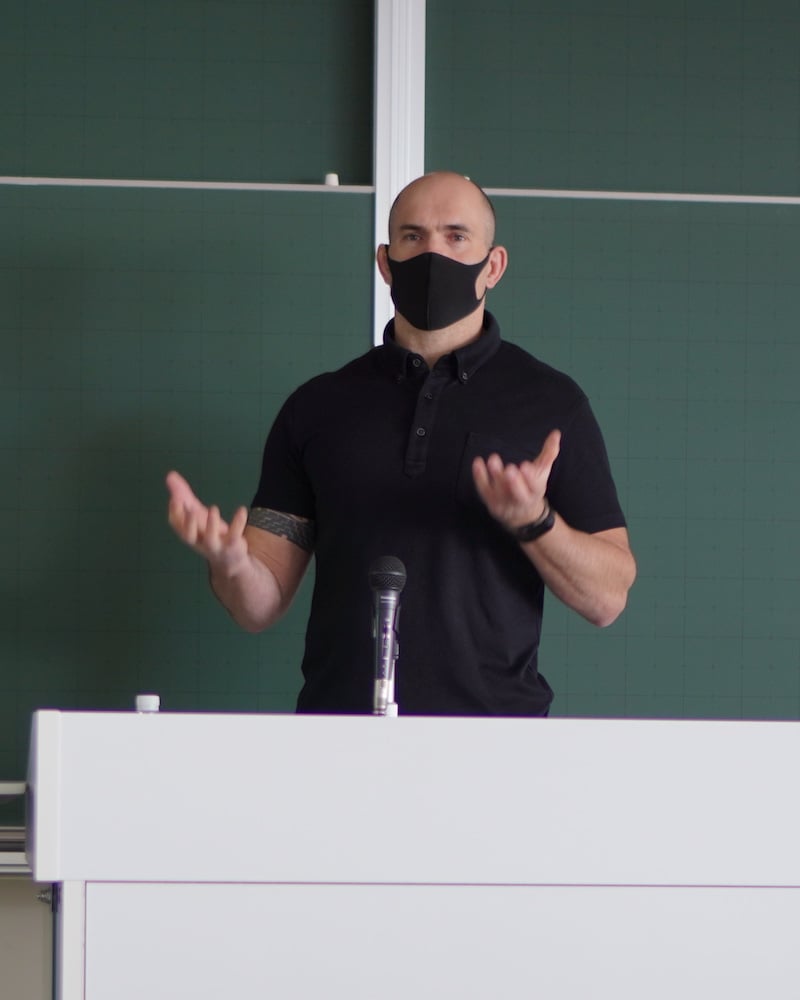
Reflections and Future Endeavors
On our final day, we met Matt Cotter, a renowned scholar in curriculum development and indigenous studies at Gakusei University. Matt enthusiastically took us on a journey through his personal experiences and the connections he had forged between Maori and Ainu cultures. As Matt shared his insights, we learned about the importance of integrating indigenous histories into educational frameworks. He emphasized the need for a curriculum that reflects the lived experiences and perspectives of indigenous communities, giving voice to their narratives and fostering a deeper understanding among students. Through his stories and experiences, Matt demonstrated how intertwining Maori and Ainu studies could create a powerful educational framework that promotes cultural appreciation, empathy, and decolonization.
